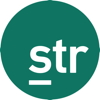
Global Performance
Global occupancy (excluding the U.S) at 70.7% was nearly at the post-pandemic high of 70.8% recorded two weeks ago. The measure was up 6.2ppts YoY with ADR rising 18.0% YoY to US$160. As a result, RevPAR continued to see strong year-over-year growth (+29.3%) and attaining US$113, its highest level since the March 2020.
Among the top 10 countries, based on supply, occupancy increased 7.9ppts YoY to 73.8%, its highest level since the start of the pandemic and surpassing the previous high (73.3%) attained two weeks ago. Top 10 ADR grew 10.9% YoY to US$146 with RevPAR increasing to US$108 (+24.2% YoY). All top 10 countries saw positive RevPAR growth except Mexico, which declined via falling ADR.
- For a seventh consecutive week, the United Kingdom lead the top 10 in occupancy with a level of 85.5%, up 1.1ppts from a year ago. Occupancy was also at its highest level since March 2020. ADR grew a strong 5.0% YoY with RevPAR rising 6.4%.
- RevPAR in Japan continued to see excessive growth (86.1%) led by a 19.2% gain in occupancy and a 56.1% ADR increase.
- China also reported strong RevPAR growth 49.1% driven by an occupancy gain of 25.5ppts along with an 18.8% ADR increase.
Outside of the Top 10, destinations known well for leisure and holidays posted the highest occupancy again as they have for the past five weeks. As it has in seven of the past 10 weeks, Ireland led the world in occupancy (90.8%, +3.1ppts YoY), followed by Fiji 88.2% (+5.7ppts), Malta 86.3% (+24.5 ppts), and Greece 86.0% (+2.3ppts).
U.S. Performance
For the week ending 1 July, U.S. weekly occupancy dropped to 69.9% down 1.6 percentage points (ppts) from the prior week, but up 2.7 percentage points (ppts) from last year. The week- over-week drop was expected, as historically, when the July 4th holiday falls on a Tuesday, the week prior to the 4th declines. The last time the July 4th holiday fell on a Tuesday was 2017, and the matched week’s occupancy decline WoW was 1.5ppts, with weekends taking the biggest hit. Even last year, the industry saw a significant week-on-week decrease ahead of the holiday week (-5.1ppts). While we have seen softer demand in Q2, the week-on-week occupancy decline is more of a seasonal, normal occurrence versus something more serious.
Average daily rate (ADR) grew 1.5% year over year (YoY) to US$156. Revenue per available room (RevPAR) increased 5.7% YoY to US$109. It is notable that this is the first week since the pandemic where occupancy played a greater role than ADR in driving YoY RevPAR gains. ADR growth has also been below the rate of inflation for the past eight weeks. We also see this as more of a return to normal as business and group demand offset nearly pure leisure demand of the past year.
Reflecting these more normal patterns, weekdays performed better in both the year-over-year and week-over-week comparison than weekends and shoulder days.
- Weekdays (Monday-Wednesday) saw the highest YoY occupancy increase of 3.3ppts and the highest WoW occupancy increase of 1.2ppts.
- Occupancy over the weekend gained 2.4ppts YoY, but compared to the previous week, it fell 6.2ppts, a victim of the 4th of July shift.
- Shoulder (Sunday and Thursday) occupancy increased 2.3ppts YoY but fell 1.1ppts WoW.
The Top 25 Markets performed better than the industry overall with occupancy increasing 3.5ppts YoY with only a slight week-on-week decrease (0.6ppts). ADR rose 2.6% to US$180 with RevPAR rising a healthy 7.7% YoY to US$133.
- Top 25 weekday performance was strong (75.6%), up 4.9ppts YoY and 2.9ppts WoW. This week’s occupancy was less than a percentage point from the post-pandemic high reached two weeks ago. ADR for these key markets increased 5.5% YoY resulting in a 12.9% RevPAR gain; it’s largest advancement of the past seven weeks. Twelve of the Top 25 Markets reported weekday RevPAR growth in excess of 10% including Atlanta, Boston, Chicago, Denver, Houston, Las Vegas, Minneapolis, Nashville, New York City, St. Louis, Washington, D.C., and Philadelphia, which led the group with a 50.9% improvement.
- Weekends also improved as occupancy increased 2ppts YoY to 76.3% while decreasing 6.5ppts WoW. ADR decreased 2.2ppts YoY netting flat RevPAR 0.4ppts.
Group demand among Luxury and Upper Upscale hotels increased 11% YoY, highlighting the continued growth in conventions, conferences and large group gatherings.
Final thoughts
U.S. occupancy is looking a lot like last summer hitting the 70s on average for the past four weeks. The 4th of July calendar causes a slight hiccup for weekly trends as travelers adjust their travel plans. Overall, the industry (U.S. & global) remains in recovery mode ahead with a solid summer season.
Looking ahead
History shows that for the week ending 8 July, which occurred in 2006 and 2017, U.S. occupancy will drop sharply (~10ppts WoW) due to constricted business travel despite increased holiday/summer travel. ADR, based on history, will also fall. Looking further, the year’s highest occupancy is expected to occur in the week ending 22 July, with measure trending down each week until the Labor Day holiday week. A similar pattern is expected for the remainder of the world.
This article originally appeared on STR.